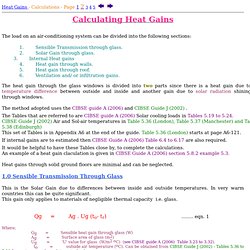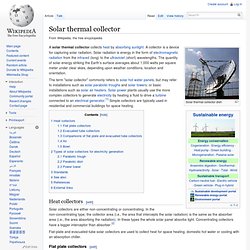

Canada - Calculating Solar Heat Gains. Solar Heat Gain Calculation. InspectAPedia tolerates no conflicts of interest.

We have no relationship with advertisers, products, or services discussed at this website. How to calculate solar gain for a building: this article discusses the method for calculating solar heat gain through windows. We include definitions of solar input, shading coefficient, solar heat gain faactor, solar heat gain coefficient, and solar transmittance. Accompanying text is reprinted/adapted/excerpted with permission from Solar Age Magazine - editor Steven Bliss. Also see PASSIVE SOLAR DESIGN KEY ELEMENTS and see PASSIVE SOLAR ENERGY MONITORING.
Green links show where you are. © Copyright 2014 InspectApedia.com, All Rights Reserved. Solar Gain Calculation: Heat Gain Through Windows The question-and-answer article below paraphrases, quotes-from, updates, and comments an original article from Solar Age Magazine and written by Steven Bliss. Question: What is Solar Heat Gain and How is it Calculated? What exactly does that give you? Low SHGC. Heat Gains. Heat Gains - Calculations - Page 12 3 4 5 Calculating Heat Gains The load on an air-conditioning system can be divided into the following sections: 1.

Sensible Transmission through glass. 2. Proper: CALCULATION OF ENERGY PRODUCED BY SOLAR COLLECTORS. Estimated Solar Collector Energy Output. Solar water heating. Solar water heating (SWH) or solar hot water (SHW) systems comprise several innovations and many mature renewable energy technologies that have been well established for many years.

SWH has been widely used in Australia, Austria, China, Cyprus, Greece, India, Israel, Japan and Turkey. In a "close-coupled" SWH system the storage tank is horizontally mounted immediately above the solar collectors on the roof. No pumping is required as the hot water naturally rises into the tank through thermosiphon flow. In a "pump-circulated" system the storage tank is ground- or floor-mounted and is below the level of the collectors; a circulating pump moves water or heat transfer fluid between the tank and the collectors.
SWH systems are designed to deliver hot water for most of the year. Overview[edit] Water heated by the sun is used in many ways. A solar water heater installed on a house in Belgium History[edit] An advertisement for a Solar Water Heater dating to 1902 Mediterranean[edit] Asia-Pacific[edit] Solar thermal collector. Solar thermal collector dish The term "solar collector" commonly refers to solar hot water panels, but may refer to installations such as solar parabolic troughs and solar towers; or basic installations such as solar air heaters.

Solar power plants usually use the more complex collectors to generate electricity by heating a fluid to drive a turbine connected to an electrical generator.[1] Simple collectors are typically used in residential and commercial buildings for space heating. Heat collectors[edit] Solar collectors are either non-concentrating or concentrating. In the non-concentrating type, the collector area (i.e., the area that intercepts the solar radiation) is the same as the absorber area (i.e., the area absorbing the radiation). Flat-plate and evacuated-tube solar collectors are used to collect heat for space heating, domestic hot water or cooling with an absorption chiller.
Flat plate collectors[edit] Flat plate thermal system for water heating deployed on a flat roof.